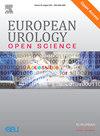Association between Two Cardiovascular Health Algorithms and Kidney Stones: A Nationwide Cross-sectional Study
IF 3.2
3区 医学
Q1 UROLOGY & NEPHROLOGY
引用次数: 0
Abstract
Background and objective
There is limited literature on the relationship between cardiovascular health (CVH) and kidney stones. This study aims to compare the association of Life’s Simple 7 (LS7) and Life’s Essential 8 (LE8) with kidney stone prevalence.
Methods
A cross-sectional analysis was conducted utilizing NHANES data (2007–2018). Participants aged ≥20 yr with a history of kidney stones and available LS7 and LE8 scores were included. Both LS7 and LE8 are scored such that higher scores indicate better CVH. Weighted proportions and multivariable logistic regression models assessed the relationship between CVH metrics and kidney stone prevalence, adjusting for confounders. The receiver operating characteristic (ROC) curve and the area under the ROC curve (AUC) were determined to distinguish between LS7 and LE8 in terms of their discriminative ability within the model associated with kidney stones.
Key findings and limitations
A total of 23 563 adults were included; the mean age was 48.1 yr (48.1% male). Kidney stone prevalence was 10.1%. The mean LS7 and LE8 scores were 8.4 and 68.6, respectively. A multivariate analysis and the restricted cubic spline model indicated a significant nonlinear negative correlation between these CVH measures and kidney stone prevalence. The LS7 ideal group showed a lower prevalence than the poor group (odds ratio [OR] = 0.53; 95% confidence interval [CI] 0.41–0.69). The high CVH group had a lower prevalence than the low CVH group (OR = 0.46; 95% CI 0.36–0.57). The AUCs for evaluating LS7 and kidney stones, as well as for LE8 and kidney stones were 0.676 and 0.677, respectively. Limitations were as follows: cross-sectional design limiting causal inference, recall bias from self-reported data, and potential residual confounding.
Conclusions and clinical implications
Both CVH algorithms show a significant nonlinear negative correlation with kidney stone prevalence. LS7 may be more accessible for broader implementation. Further high-quality prospective studies are needed to clarify this relationship.
Patient summary
In this study, we explored the connection between heart health and kidney stones using data from a large national survey. We found that better heart health, measured by two different scoring methods, is linked to a lower chance of having kidney stones. Our results suggest that promoting heart health could help reduce the risk of kidney stones in adults.
求助全文
约1分钟内获得全文
求助全文
来源期刊

European Urology Open Science
UROLOGY & NEPHROLOGY-
CiteScore
3.40
自引率
4.00%
发文量
1183
审稿时长
49 days
 求助内容:
求助内容: 应助结果提醒方式:
应助结果提醒方式:


